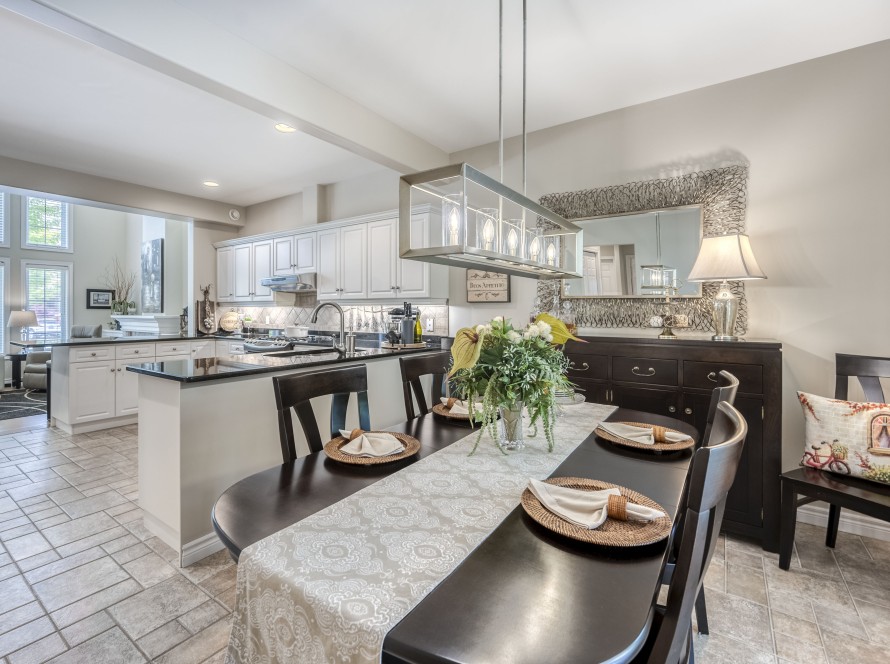In the competitive world of real estate, capturing high-quality photos is crucial for attracting potential buyers and facilitating quicker sales. As a professional photographer, you understand that first impressions are often made through images, and exceptional photos can set a property apart from the rest. By focusing on creating visually appealing and inviting images, you can highlight a property’s unique features and charm. This guide offers practical tips to help you enhance your real estate photography skills, ensuring that your photos not only capture attention but also effectively showcase properties, ultimately leading to faster sales and satisfied clients.
Preparing the Property
To create stunning real estate photos, start by decluttering and depersonalizing the spaces. This means removing personal items, excess furniture, and any clutter that might distract potential buyers. A clean and neutral environment allows viewers to imagine themselves living in the space, making it more appealing. By presenting a tidy and organized home, you set the stage for capturing images that highlight the property’s best features.
Lighting plays a crucial role in real estate photography. Ensure that each room is well-lit by opening curtains and blinds to let in natural light, and turn on all available lights. Proper lighting not only enhances the overall appearance of the space but also helps to emphasize its unique characteristics. Bright, well-lit photos are more likely to catch the eye of potential buyers as they browse listings.
Staging key areas of the home, such as the living room, kitchen, and master bedroom, can significantly impact the quality of your real estate photos. Arrange furniture and decor in a way that showcases the full potential of each space. Thoughtful staging can highlight the functionality and flow of a room, making it more attractive to prospective buyers. By investing time in staging, you create a welcoming atmosphere that resonates through your photos.
Pay attention to the small details that can make a big difference in your real estate photos. Ensure that all surfaces are clean and free of dust, and check that any visible items, like books or kitchenware, are neatly arranged. These subtle touches contribute to a polished and professional look, enhancing the overall appeal of the property. Remember, the goal is to create an inviting environment that draws buyers in.
Finally, consider the exterior of the property as well. Curb appeal is just as important as the interior when it comes to real estate photos. Make sure the lawn is mowed, the driveway is clear, and any outdoor furniture is arranged attractively. A well-maintained exterior sets a positive first impression and encourages potential buyers to explore further. By preparing both the inside and outside of the property, you ensure that your photos capture the full essence of the home.
Mastering Photography Techniques
To excel in professional real estate photography, it’s essential to equip yourself with the right tools and techniques. A wide-angle lens is a valuable asset, allowing you to capture the full scope of rooms and make spaces appear larger and more inviting. This type of lens helps convey the true size and layout of a property, providing potential buyers with a comprehensive view. By investing in quality equipment, you set the foundation for creating images that stand out in a competitive market.
Composition is another critical aspect of professional photography. By following the rule of thirds, you can create balanced and visually appealing images that draw the viewer’s eye to key features of the property. Ensuring that lines are straight and horizons are level adds a professional touch, enhancing the overall quality of your photos. Experimenting with different angles and perspectives can also reveal the most flattering views of a property, showcasing its unique charm.
- Use a wide-angle lens to capture more of the room.
- Follow the rule of thirds for balanced composition.
- Ensure straight lines for a professional appearance.
- Experiment with angles to find the best views.
- Highlight unique features to attract potential buyers.
Lighting is a crucial element that can make or break your real estate photos. Natural light is often the best choice, so aim to shoot during the day when rooms are naturally bright. However, don’t hesitate to use additional lighting to fill in shadows and highlight specific areas. By mastering lighting techniques, you can create images that are both vibrant and true to life, making the property more appealing to potential buyers.
Finally, pay attention to the details that can elevate your real estate photography. Small adjustments, such as removing distracting elements from the frame or adjusting the camera’s height, can significantly impact the final image. These subtle changes can help maintain focus on the property’s best features, ensuring that your photos effectively communicate its value. By honing your skills and paying attention to detail, you can produce stunning images that capture the essence of each property and attract eager buyers.
Editing and Enhancing Photos
In the realm of real estate photography, post-processing is a powerful tool that can transform your images from good to exceptional. Utilizing photo editing software allows you to adjust brightness, contrast, and color balance, ensuring that your photos are vibrant and true to life. These adjustments can help highlight the property’s best features, making them more appealing to potential buyers. By refining your editing skills, you can produce images that stand out in a crowded market.
Removing unwanted elements or distractions from your photos is another crucial step in the editing process. Cluttered backgrounds or unsightly objects can detract from the property’s appeal, so it’s important to maintain a clean and focused composition. By carefully editing out these distractions, you ensure that the viewer’s attention remains on the property’s unique features. This attention to detail can make a significant difference in how your photos are perceived.
Virtual staging is an innovative technique that can enhance your real estate photography, especially for empty rooms. By digitally adding furniture and decor, you help potential buyers visualize the space’s possibilities and create a more inviting atmosphere. This approach can be particularly useful in showcasing the functionality and flow of a room, making it more attractive to prospective buyers. Incorporating virtual staging into your workflow can elevate your photography and provide a competitive edge.
Consistency is key when editing real estate photos, as it helps create a cohesive and professional portfolio. By applying similar editing styles and techniques across all your images, you present a unified and polished look that reflects your brand. This consistency not only enhances the overall quality of your work but also builds trust with potential clients. By maintaining a high standard of editing, you reinforce your reputation as a skilled real estate photographer.
As you refine your editing techniques, remember that the goal is to enhance the property’s natural beauty without over-editing. Striking the right balance between enhancement and authenticity is crucial in creating images that resonate with potential buyers. By focusing on subtle improvements, you can produce photos that are both captivating and realistic, ultimately helping properties sell faster. Embrace these real estate photography tips to elevate your work and achieve greater success in the industry.
Capturing the Perfect Shot: Elevate Your Real Estate Listings
By applying these expert tips, you can significantly enhance the visual appeal of your real estate listings. High-quality, well-composed photos not only draw in potential buyers but also convey the true essence and potential of a property. As you refine your photography skills, you’ll find that your listings stand out in the competitive market, leading to quicker sales and satisfied clients. Embrace these strategies to transform your real estate photography and achieve remarkable results.




